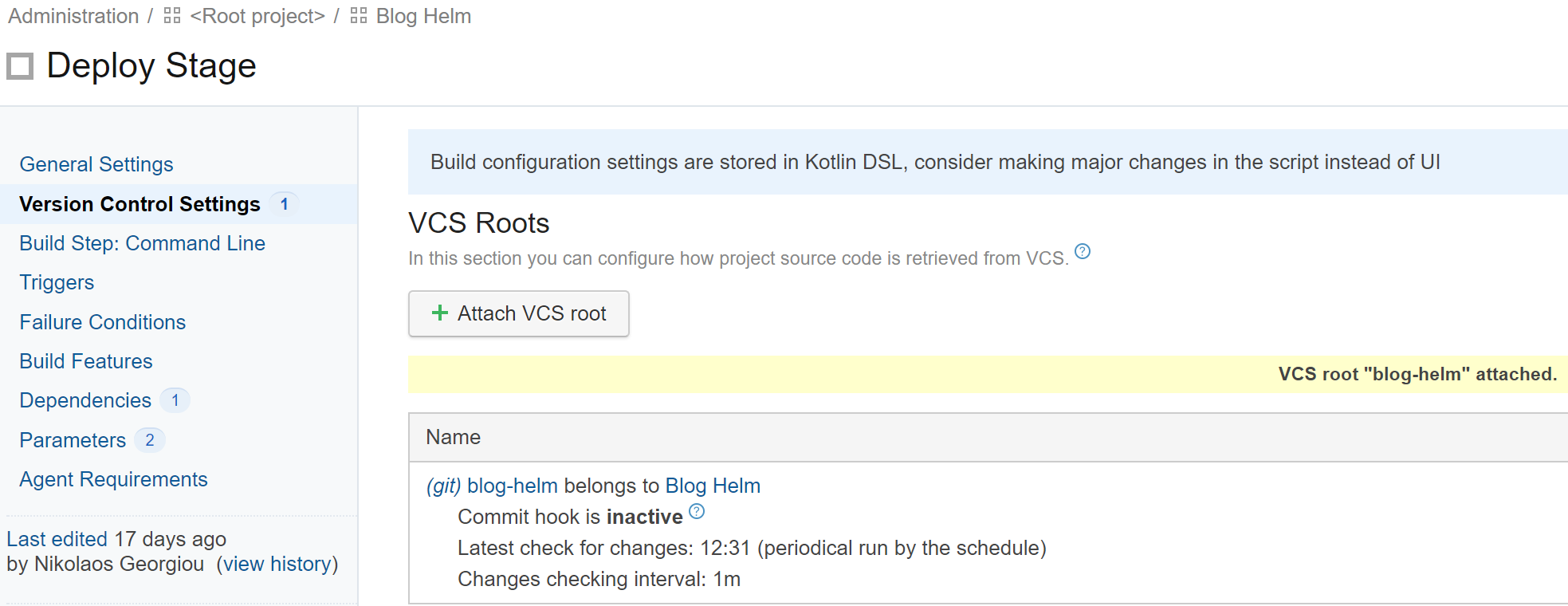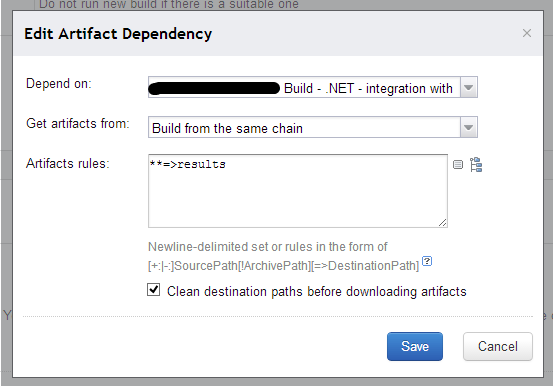
For example, use " mylib-%%.zip " to refer to a file with the build number in the name. You can use build parameters in the artifacts specification.That is, TeamCity will create directories starting from the first occurrence of the wildcard in the pattern. The files will be published preserving the structure of the directories matched by the wildcard (directories matched by "static" text will not be created). The wildcard should represent a path relative to the build checkout directory. wildcard - to publish files matching Ant-like wildcard pattern (only "*" and "**" wildcards are supported).The files will be published preserving the directories structure under the directory specified (the directory itself will not be included). The directory name should be a path relative to the Build Checkout Directory. directory_name - to publish all the files and subdirectories within the directory specified.The name should be relative to the Build Checkout Directory. Note that although absolute paths are supported in the source part, it is recommended to use paths relative to the build checkout directory. Rules are grouped by the right part and are applied in the order of appearance, e.g.

The parts enclosed in square brackets are optional. Each line can be of the form source to include and -:source to exclude files or directories to publish as build artifacts. Patterns support the "*" and "**" wildcards (see below). You can specify exact file paths or patterns, one per line or comma-separated. The Artifact Paths field supports relative (to the build checkout directory) and absolute paths. TeamCity will place the paths to them into the input field. If you have a finished build on an agent, you can use the checkout directory browser (which lists the checkout directory content on the agent) and select artifacts from the tree. On the General Settings page of the build configuration, you can specify patterns for the files on the agent which will be uploaded to the server after the build. For details, refer to Build Script Interaction with TeamCity.īuild artifacts are files produced by the build which are stored on TeamCity server and can be downloaded from the TeamCity web UI or used as artifact dependencies by other builds. It is also possible to change the build number from within your build script. Please include the build counter in the build number and do not reset the build counter to lesser values. Though not required, it is still highly recommended to ensure the build numbers are unique. For more information, refer to the following sections below:ġ.0.%unter%.%_Project_svn%

For more information, refer to the Artifact Paths section below.Īdditional options for this build configuration. Use the Reset counter link to reset counter value to 1. Each build increases the build counter by 1. Specify the counter to be used in the build numbering. For more information, refer to the Build Number Format section below. This value is assigned to the build number. composite build configuration, which aggregates results from several other builds combined by snapshot dependencies and presents them in a single place ( since TeamCity 2017.2) deployment build configuration, which deploys artifacts of other builds to some environment ( since TeamCity 2017.2 ) regular build configuration, defining actions and rules to apply to the source code. The ID of the build configuration (must be unique across all build configurations and templates in the system).Īn optional description for the build configuration.īuild Configuration Type ( since TeamCity 2017.2 )


 0 kommentar(er)
0 kommentar(er)
